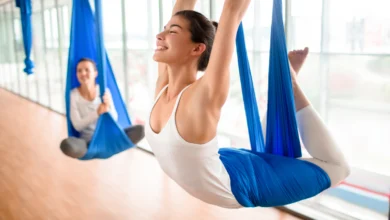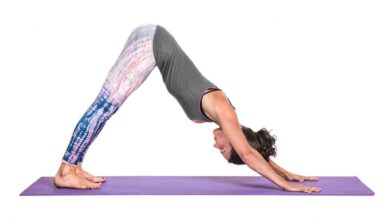Utilizing Yoga to Minimize Stress
The popularity of yoga is on the rise as individuals discover both its physical and psychological advantages. Embarking on a personal yoga journey can serve as a preventive measure against stress and is frequently pursued by those eager to foster personal growth and self-improvement. A well-rounded yoga routine goes beyond physical postures to include breathing exercises, meditation, and relaxation methods such as Yoga Nidra, which collectively contribute to stress reduction. Continue reading to explore how yoga can diminish stress and enhance your mental health.

Yoga plays a pivotal role in fostering mental and physical calm, which, in turn, helps alleviate stress and anxiety. Engaging in yoga postures increases flexibility, eases tension, and mitigates pain, potentially helping you release both physical and emotional blockages. This release of blockages can result in the production of endorphins, the body’s natural mood enhancers, positively impacting stress management.
A focused yoga practice bolsters awareness, improves concentration, and steadies the mind by anchoring it in the present moment. This mindfulness helps in recognizing the transient nature of sensations, thoughts, and emotions, facilitating the release of attachments to various experiences. It can also encourage the cultivation of positive feelings such as happiness, contentment, and peace.
A wealth of scientific data validates the stress-relieving benefits of yoga. A 2018 study highlighted significant stress, depression, and anxiety reduction among women practicing Hatha yoga thrice weekly over a month. Although more research is needed to fully understand yoga’s potential in treating mental health conditions, preliminary findings are promising. A 2020 study on men reported decreased cortisol levels and increased relaxation following yoga stretches, while another study in the same year documented stress and negative emotion reduction through 11-minute daily yoga nidra sessions over a month.
To combat stress, yoga breathing exercises, or pranayama, can be highly effective. These exercises teach control over breath, leading to relaxation, improved sleep quality, and mindfulness. They can be performed as part of a yoga routine or independently to aid in relaxation during stressful times. Some popular pranayama techniques include alternate nostril breathing, ujjayi breathing, breath of fire, lion’s breath, sitali breath, and humming bee breath.
Kickstart your stress relief with beginner-friendly yoga poses such as the Cat-Cow Pose, Child’s Pose, Legs-Up-the-Wall Pose, and Corpse Pose. Each pose focuses on relaxation and stress relief through mindful movements and deep breathing.
Meditation, including yoga nidra, is another effective tool for stress reduction. It can be practiced in various positions and is recommended to be included as part of a consistent yoga routine. Establishing and sticking to a structured meditation practice can enhance relaxation and mental health.
To maximize the stress-relieving benefits of yoga, stay open to releasing negativity during practice, focus on present moments, and apply stress management techniques beyond the yoga mat, including lifestyle and dietary adjustments. Consult a healthcare provider before embarking on a new yoga regimen to ensure it’s appropriate for your health conditions.
In sum, incorporating yoga, meditation, and breathing practices into your daily life can significantly aid in stress reduction, while offering a path to improved overall well-being. Embrace the journey of discovering the most beneficial practices for you.




